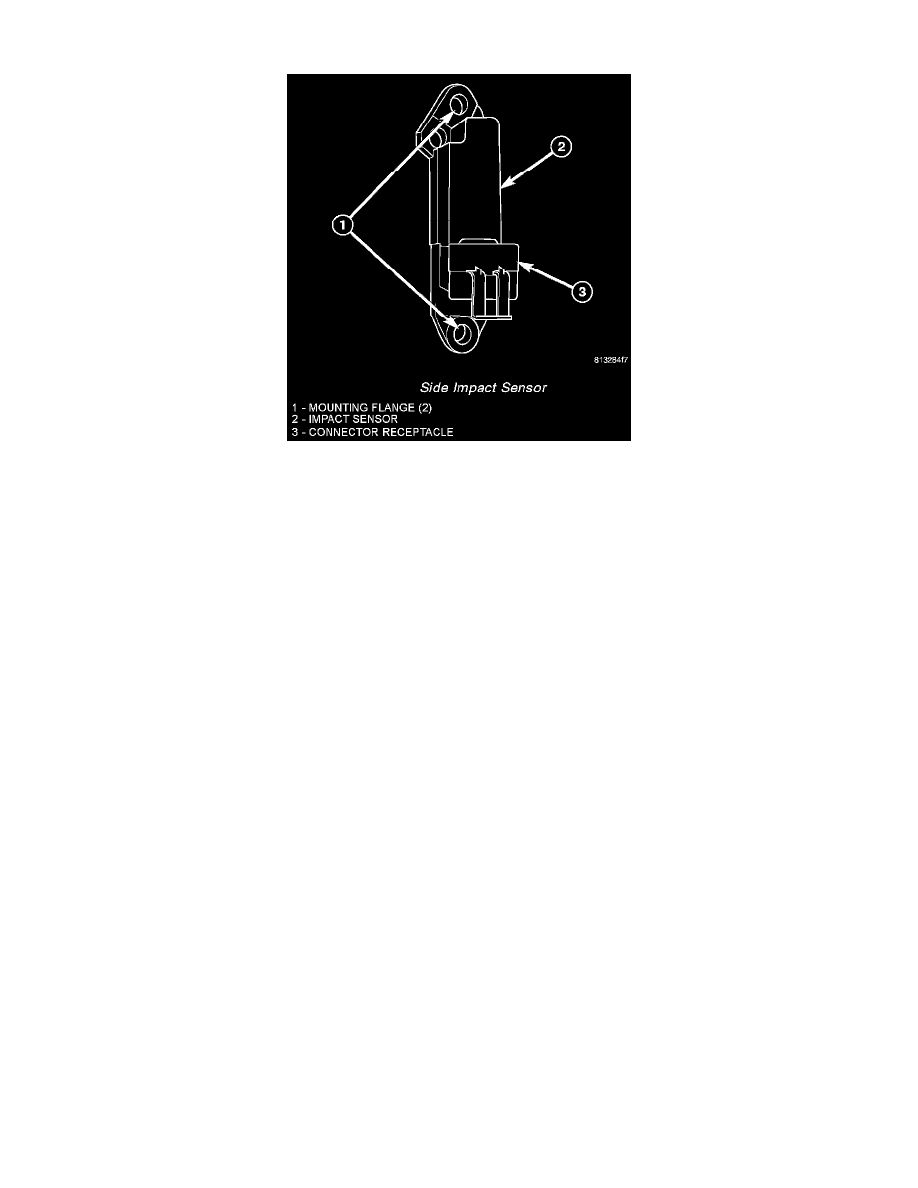Sprinter 3500 L5-2.7L DSL Turbo (2004)

Impact Sensor: Description and Operation
Side Impact Sensor
On vehicles equipped with the optional side curtain airbags, two side impact sensors are used, one each for the left and right sides of the vehicle These
sensors are mounted remotely from the bi-directional safing sensor that is internal to the Airbag Control Module (ACM) The side impact sensors are
each secured with two screws to the forward vertical surface of the right and left front door step wells and concealed behind the step well trim paneling
within the passenger compartment.
The impact sensor housing has an integral connector receptacle and two integral mounting flanges, one at the top and one at the bottom An arrow on the
sensor housing provides a visual verification of the proper orientation of the unit, and should always be pointed toward the outboard side of the vehicle A
cavity in the center of the molded plastic impact sensor housing contains the electronic circuitry of the sensor, which includes an electronic
communication chip and an electronic impact sensor Potting material fills the cavity to seal and protect the internal electronic circuitry and components
The side impact sensors are each connected to the vehicle electrical system through a dedicated take out and connector of the vehicle wire harness.
The side impact sensors cannot be repaired or adjusted and, if damaged or faulty, they must be replaced.
The side impact sensors are electronic accelerometers that sense the rate of vehicle deceleration, which provides verification of the direction and severity
of an impact. Each sensor also contains an electronic communication chip that allows the unit to communicate the sensor status as well as sensor fault
information to the microprocessor in the Airbag Control Module (ACM). The ACM microprocessor continuously monitors all of the passive restraint
system electrical circuits to determine the system readiness. If the ACM detects a monitored system fault, it sets a Diagnostic Trouble Code (DTC) and
controls the airbag indicator operation accordingly.
The impact sensors each receive battery current and ground through dedicated left and right sensor plus and minus circuits from the ACM. The impact
sensors and the ACM communicate by modulating the voltage in the sensor plus circuit. The hard wired circuits between the side impact sensors and the
ACM may be diagnosed and tested using conventional diagnostic tools and procedures. However, conventional diagnostic methods will not prove
conclusive in the diagnosis of the ACM or the impact sensors. The most reliable, efficient, and accurate means to diagnose the impact sensors, the ACM,
and the electronic message communication between the sensors and the ACM requires the use of a DRBIII(R) scan tool. Refer to the appropriate
diagnostic information.
